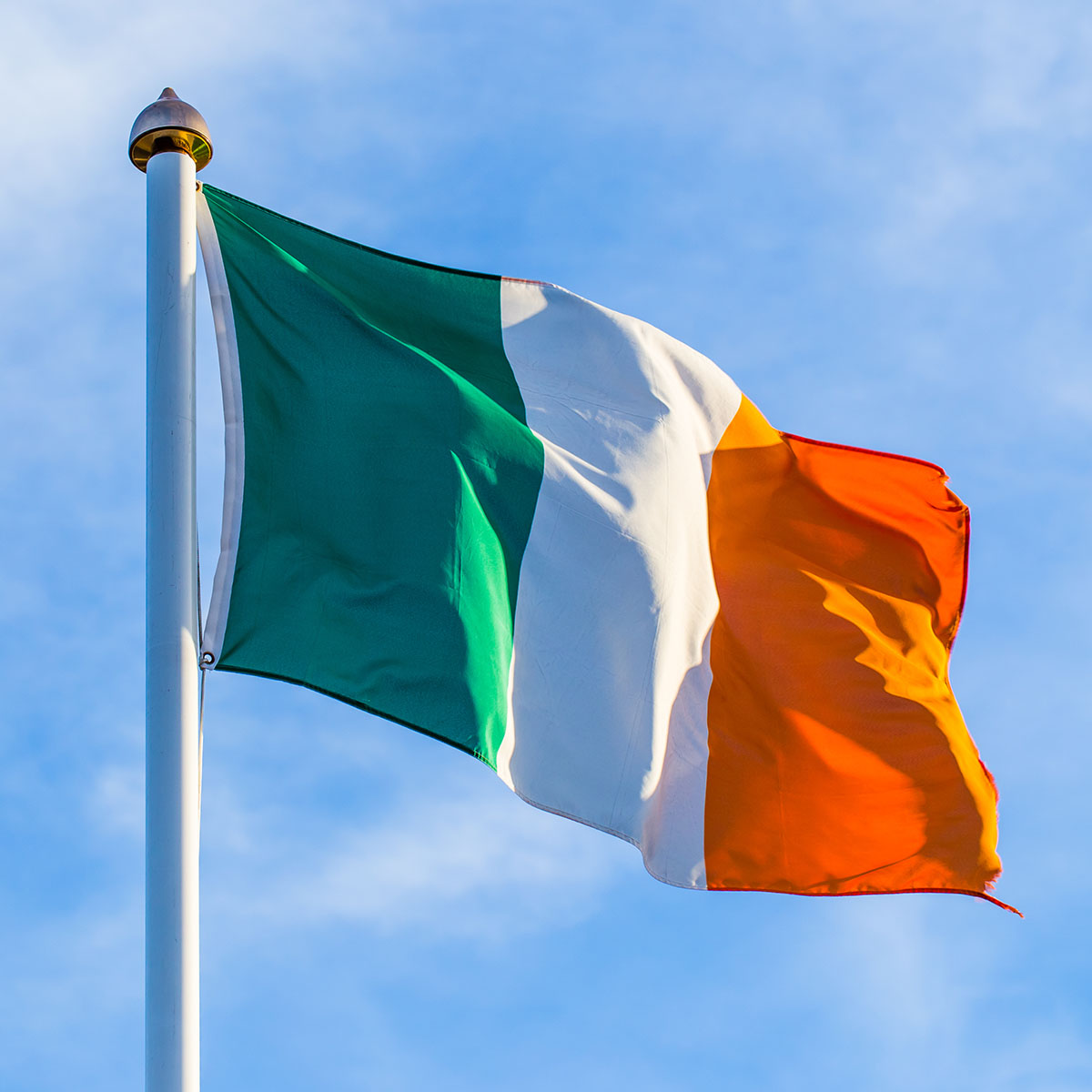The Legacy of St. Patrick

The Legacy of St. Patrick – Ireland’s Most Beloved Holiday – Saint Patrick’s Day
The legacy of the Irish Saint, St. Patrick, is one that has fascinated people for centuries. It tells the tale a man who dedicated his life to spreading Christianity in Ireland, and whose influence has lasted through the ages. This article will explore the history and legacy of St. Patrick, from his early life as a Christian missionary to current celebrations of his life and work.
St. Patrick is celebrated each year on March 17th, with parades and festivals held in his honor throughout Ireland and other countries around the world. But who was this man whose memory is still so revered? The story of St. Patrick begins with his capture by Irish raiders at age 16, when he was taken from Britain to slavery in Ireland. Through adversity and hardships, he found strength in his faith and was eventually able to escape after six years as a slave.
After returning home to Britain, St. Patrick chose to devote the rest of his life to missionizing in Ireland – an act which would ultimately change the course of history there forever. His legacy lives on today through countless stories, traditions, and holidays that celebrate him across the globe each year on March 17th – also known as St. Patrick’s Day!
The Origins of St. Patrick
The origins of St. Patrick have been shrouded in mystery for centuries, and even today much of his story remains unknown. But there is one thing that’s certain: he was a man who had an immense impact on the history of Ireland and its people.
He was born around 385 AD in Britain, although some believe he was actually born in France. He spent the majority of his life as a Roman-British citizen until he was kidnapped by Irish raiders at the age of 16. During his six years as a captive, Patrick converted to Christianity and developed an intense spiritual connection with Ireland, becoming determined to share the gospel with its people.
In 432 AD, Patrick returned to Ireland and began preaching throughout the country. He soon found success spreading the Christian message and eventually became known as ‘the Apostle of Ireland.’ His mission led to the establishment of churches throughout the land, many of which remain standing today. In addition to this great accomplishment, Patrick also worked diligently to unite different tribes and clans under Christianity during a time when paganism still held strong influence over many areas in Ireland. It’s no wonder why he’s celebrated as one of the most influential figures in Irish history!
St. Patrick’s Missionary Work In Ireland
St. Patrick was a 5th-century missionary and Bishop of Ireland who is credited with bringing Christianity to the Irish people. His missionary work in Ireland was incredibly influential and is still remembered today. He eventually became the patron saint of Ireland.
During his time in Ireland, St. Patrick preached to people about Christianity and baptized them in large numbers. He also established churches, monasteries and schools throughout the country to help spread his message. He famously used the shamrock to explain the concept of the Holy Trinity – that God is made up of three persons (the Father, Son, and Holy Spirit).
St. Patrick’s mission in Ireland saw him travel around teaching and converting people; he wrote extensively on Christian theology and doctrine, as well as encouraging local rulers to support Christianity throughout the entire island. His efforts were instrumental in establishing an Irish church that was independent from Rome and helped shape early Irish culture forever.
Symbolism of The Shamrock
The shamrock has become a powerful symbol for St. Patrick and his missionary work in Ireland. Its three leaves represent the Holy Trinity, with each leaf representing the Father, Son, and Holy Spirit respectively. By explaining this to the Irish people, St. Patrick was able to bridge the gap between Christianity and paganism that had been created by years of colonization by non-Christian settlers.
The shamrock is also associated with Ireland itself. It is seen as a symbol of good luck, fertility, and even rebellion against British rule. This symbolism was especially popular in the nineteenth century during the Young Irelander Rebellion of 1848 which sought greater autonomy from Britain. The four-leaved clover was also used as a sign of solidarity among members of secret societies like the United Irishmen during this time period.
Today, the shamrock is still seen as an important symbol for Irish identity around the world and its popularity continues to rise with every St. Patrick’s Day celebration. Its representation of faith and national pride illustrate why it has become such an iconic part of Irish culture over centuries of history.

The Popularity of St. Patrick’s Day
The popularity of St. Patrick’s Day is undeniable. It’s celebrated worldwide, and there are parades, parties, and other festivities everywhere. But why is it so popular? One reason is its association with Irish culture, which has been embraced across the world. For example, people of ten wear green on St. Patrick’s Day to show their support for Ireland and its heritage.
Another factor in the holiday’s popularity is that it encourages joy and celebration. People use the day as an excuse to let loose, whether that means having a parade or throwing a party with friends and family. The emphasis on fun makes St. Patrick’s Day attractive to all kinds of people who want to take part in a shared experience of pleasure and happiness.
It’s also noteworthy that the holiday ties together many different cultures around the world who come together to celebrate in their own unique way. This diversity is part of what makes St. Patrick’s Day such an awesome event: no matter who you are or where you’re from, you can get involved in some way and show your appreciation for this special day!
Legacy and Historical Significance of St. Patrick
The historical significance of St. Patrick is just as important to understand as the popularity of his namesake holiday. He was a 5th century Romano-British Christian missionary and bishop, who is famous for bringing Christianity to Ireland. While there are many myths, stories and legacies surrounding him, historians have established that he lived in the late 4th century, likely born in Roman Britain.
St. Patrick’s influence on Irish culture, language and traditions has been immense. He wrote two surviving letters from around 450 AD which the Irish Church still uses today. His teaching is credited with helping to spread Christianity throughout Ireland by the 7th century, while also developing the Irish language and literature along the way.
His impact on modern day Ireland remains strong; he is remembered through monuments and place names throughout the country. The day of his death (17 March) is celebrated as a religious feast day worldwide and has become an international celebration of Irish culture. This celebration helps bring together people of all backgrounds who share a common love for St. Patrick’s legacy!
Common Misconceptions About St. Patrick
Despite the fact that St. Patrick is a revered figure in Irish culture, there are many common misconceptions about him. The first is that he was the first to bring Christianity to Ireland; however, this is untrue, and Christianity had already been introduced to the area prior to his arrival. Another misconception is that St. Patrick used a shamrock as a metaphor for the Holy Trinity when preaching; though this is of ten depicted in artwork and literature, there is no evidence of it having happened historically.
A third misconception about St. Patrick is that he drove all of the snakes out of Ireland. This too is not true, as there never were any snakes native to the island – likely due to its geographic isolation from mainland Europe. In actuality, this legacy was likely derived from St. Patrick’s mission to rid Ireland of pagan worshipers and idols, symbolically ‘banishing’ them from the land much like snakes would have been banished in other cultures at the time.
St. Patrick’s influence on Irish culture still lives on today with millions celebrating his feast day every year on March 17th around the world; however, it’s important to be aware of these common misconceptions surrounding him so that we can better appreciate his true impact on history and culture moving forward.
Legacy of the Color Green and St. Patrick
The color green has become synonymous with St. Patrick, and it’s no wonder why. After all, the Irish are proud of their national color, and St. Patrick is a beloved figure in Ireland. But there’s more to the story than meets the eye when it comes to why green is associated with this particular saint.
It turns out that St. Patrick himself wasn’t actually a fan of the color green at all! His favorite hue was actually blue, because he believed that this was the shade most closely related to heaven and spiritual enlightenment. So how did green come to be so strongly linked to him?
The answer lies in folklore. According to legacy, St. Patrick used shamrocks – which are of course green – as a tool for teaching about Christianity in Ireland by showing how God could exist as three parts but still be one entity. And from then on, the Irish people saw green as a symbol of hope and faith – making it an ideal tribute to Saint Patrick himself!
St. Patrick’s Day Celebrations Around The World
St. Patrick’s Day is one of the most widely celebrated holidays in the world. From parades in Ireland to green beer-drinking competitions in America, people of all backgrounds come together to commemorate the life and legacy of St. Patrick. It’s a day that truly brings people together, regardless of their cultural or religious background.
The first St. Patrick’s Day parade was not in Ireland but in New York City in 1762 by Irish soldiers serving in the British army. |
Here are hundreds of St. Patrick’s Day parades held across the world every year and more than parades in most major cities in the United States. Different countries across the globe celebrate St. Patrick’s Day in unique ways, each with its own traditions and festivities. In Ireland, it’s a national holiday marked by traditional music and dancing, while in America, it’s an opportunity for people to don green clothing and enjoy a pint of Guinness or two! Meanwhile, Canada celebrates with its own parade filled with colorful floats and marching bands playing Irish folk tunes.
St. Patrick’s Day is celebrated with parades and other festivities in more than 30 countries around the world, including Argentina, Australia, Canada, Japan, and Russia.
Some of the biggest St. Patrick’s Day parades worldwide take place in New York City (USA), Dublin (Ireland), Buenos Aires (Argentina), Sydney (Australia), and Montreal (Canada).
Some of the most unique St. Patrick’s Day parades worldwide take place in Tokyo (Japan), Auckland (New Zealand), Oslo (Norway), Munich (Germany), and Hot Springs (Arkansas).
Some of the most colorful St. Patrick’s Day celebrations worldwide take place in Chicago (USA), where they dye the river green; Montserrat (Caribbean), where they have a weeklong festival; Savannah (USA), where they have a fountain of green water; London (UK), where they have a giant shamrock balloon; and Rio de Janeiro (Brazil), where they light up Christ the Redeemer statue in green.
No matter where you are on March 17th, there will be no shortage of fun activities to take part in as we all come together to remember the patron saint of Ireland – St. Patrick himself! So why not take this year as an opportunity to try something new? Whether it be attending a parade or trying some traditional Irish dishes, there are plenty of ways to make your St. Patrick’s Day special this year!
Stories And Legacies Surrounding St. Patrick
St. Patrick’s Day is celebrated around the world, and it’s a day filled with stories and legacies about this beloved saint. From Ireland to other parts of the world, tales of his miraculous life are told and shared. But what exactly are these stories?
It is said that St. Patrick used shamrocks to teach people about the Holy Trinity, while also banishing snakes from Ireland to protect the people. Legacy has it that he stood up against pagan kings and converted them to Christianity by using his strength and faith in God. Other stories tell of his time spent as a missionary in Scotland and Wales, where he spread Christianity even further.
The tales surrounding St. Patrick are varied, but they all serve to remind us of his remarkable life and faith in God’s power. Through these stories, we learn more about this beloved saint who devoted himself to serving others in service of God – something we can all strive for today!
Religious Significance of St. Patrick
The religious significance of St. Patrick is widely debated, with some people believing he was a real historical figure and others viewing him as a mythical legacy. Despite the uncertainty, it is clear that St. Patrick has come to symbolize many aspects of Christianity. He is of ten viewed as a saintly figure who brought the Christian faith to the Irish people and helped Ireland become a largely Catholic country.
St. Patrick is also connected with several symbols associated with the Christian faith, such as the shamrock which he used to explain the concept of the Trinity to Irish pagans; his use of the shamrock has since become synonymous with Irish culture and national pride. Additionally, St. Patrick’s Day celebrations are held annually on March 17th in honor of his life and work – these events usually involve parades, feasts, and other festivities that bring together Christians from around the world in celebration.
Through his legacy, St. Patrick continues to be an important spiritual symbol for many Christian communities worldwide; his message of faith, hope and love still reverberates through generations today.
The Relationship Between Christianity and Irish Culture
The relationship between Christianity and Irish culture is a complicated one. For hundreds of years, the two have been intertwined in a variety of ways. Ireland’s patron saint, St. Patrick, provides an excellent example of this relationship. He was a Christian missionary who brought the teachings of Christianity to Ireland in the 5th century, becoming an integral part of Irish history and culture.
As of ten happens when a new religion is introduced to a different culture, elements from both sides were combined over time. Christianity became entwined with pre-existing Celtic beliefs and traditions, resulting in unique practices and customs. This includes the celebration of St. Patrick’s Day – originally a religious feast day for honoring St. Patrick – which has now become an international holiday with secular activities like parades and green beer drinking.
Today, Christianity remains influential in Ireland but it is no longer as dominant as it once was. Nevertheless, its integration into Irish culture is undeniable; many symbols and festivals still have religious connotations while others have been adapted to incorporate more modern aspects such as pop music and dance performances at St. Patrick’s Day celebrations around the world. As a result, the connection between Christianity and Irish culture continues to be strong even in our contemporary society.
The Role of Catholicism In Irish History
Catholicism has played an important role in Irish history. It first arrived in the 5th century and was given special status by the Irish government in 1536. Since then, it has been closely intertwined with the culture and politics of Ireland, influencing everything from art to education.
This influence is particularly evident in the political arena. The Catholic Church had a huge say in how Ireland was governed for centuries, even after Ireland gained independence from Britain in 1922. This is evidenced by the fact that the President of Ireland must be a practicing Catholic to this day. Catholicism also plays an important role in shaping public opinion on social issues such as abortion and same-sex marriage.
The impact of Catholicism on Irish culture can also be seen in its numerous festivals and customs, such as St Patrick’s Day which is celebrated annually throughout the world. It has also shaped language, music, and literature; many famous Irish writers like James Joyce were heavily influenced by their Catholic faith. In short, Catholicism has been an integral part of Irish life for centuries and continues to shape its society today.
Modern Reinterpretations of St. Patrick’s Legacy
St. Patrick’s legacy is a legend that has changed drastically over the years, with modern interpretations of his life and work of ten differing from those of centuries past. His role in Ireland and the world is now looked at through a different lens, with many praising him for his work as a missionary and apostle to the Irish people.
Over time, St. Patrick’s influence has become associated with more than just Catholicism; he is now seen as representative of Irish culture and heritage as well. This shift has given birth to new traditions, such as celebrating St. Patrick’s Day on March 17th, which are celebrated all over the world by people who have never even set foot in Ireland.
These reinterpretations of St. Patrick’s legacy show that his influence reaches far beyond religious contexts and into global understandings of culture and identity. Whether it be through religious ceremonies or through secular holidays, St Patrick’s legacy continues to impact our lives today in ways that would be unrecognizable to previous generations.
St. Patrick’s Influence on Irish Society Today
St. Patrick’s influence on Irish society today is both obvious and powerful. His legacy remains a source of pride, inspiration and identity for the people of Ireland. From the annual celebration of St. Patrick’s Day to the representation of his iconography in art and literature, the saint has become deeply embedded in Irish culture.
The impact of St. Patrick can be seen all over Ireland today, from street signs, to statues, to businesses that bear his name or image. He is also an important figure in the national imagination; he is of ten depicted as a heroic figure who brought Christianity to Ireland and helped free the country from paganism.
In recent years, some historians have sought to emphasize other aspects of St Patrick’s life and legacy – such as his advocacy for social justice – in addition to his spiritual leadership. By restoring this wider context, they hope to create a more complete picture of St Patrick’s life and his impact on Irish society today.
Irish Myths and Legacies Connected To St. Patrick
St. Patrick is an iconic figure in Irish culture, and the mythology and legacies surrounding him are a testament to his impact on the country’s history and society. From the banishment of snakes from Ireland to his mission of converting pagans to Christianity, many myths have been created around St. Patrick’s life and legacy. This article looks at some of these stories and examines their relevance in modern-day Ireland.
One popular legacy tells of how St. Patrick drove all the snakes out of Ireland by beating a drum as loud as he could until they all left the island. While this tale is not historically accurate, it serves as a reminder that St. Patrick was determined to spread Christianity throughout Ireland in order to protect it from pagan influences. This story also highlights how powerful the voice of St. Patrick was, even centuries after his death, in promoting faith and culture within Irish society.
Another myth associated with St. Patrick is that he used a shamrock to illustrate the concept of the Holy Trinity when preaching about Christianity to pagans who were unfamiliar with it. This story has become closely connected with Irish identity due to its use in national symbols such as the Irish flag and coat of arms, further demonstrating how influential St. Patrick remains today in shaping Irish culture and beliefs.
The legacies connected with St. Patrick show us just how much his life resonates with people today, even centuries later; they serve as reminders of his impact on both religious and national identity in Ireland throughout history up until now.
St. Patrick’s Limerick for You!
On St. Patrick’s Day, with pride in our heart,
We celebrate Irish roots from the start,
With a flag of green, white, and gold,
We remember our history so bold,
And toast the spirit that shall never depart.
On St. Patrick’s Day, the time to salute,
Our legends that make us so resolute,
From Yeats’ poems to Joyce’s prose,
And Bono’s voice that truly flows,
Our brilliant culture we pay tribute!
On St. Patrick’s Day, I cannot wait,
With joy in my heart, feeling great!
Singing Irish songs, oh so fine,
And raise a glass of stout or wine,
To the patron saint of Ireland, we celebrate!
The legacy of St. Patrick is one that has been deeply ingrained in Irish culture and history and continues to influence the nation even today. He was a symbol of hope, faith, and strength for his people in their darkest days and a reminder to never give up. His missionary work and use of the shamrock as a symbol represent his commitment to spreading Christianity throughout Ireland and beyond. While some may see him as little more than an excuse to have a good time on St. Patrick’s Day, his true impact can be seen in the way he helped shape Irish society and culture. His memory will continue to be celebrated by generations of Irish people, both at home and abroad, reminding us all that no matter how difficult times may be, we can persevere if we keep faith in our hearts. St. Patrick will forever remain an important figure in the history of Ireland and an inspiration for those who strive for a better life for themselves and their communities.
Sláinte !
See these popular websites for more on St. Patrick’s Day:
History.com – History and origins of St. Patrick’s Day
StPatricksDay.com – St. Patrick’s Day celebration ideas and events
Timeanddate.com – St. Patrick’s Day traditions and customs around the world
Wikipedia.org – Information on St. Patrick’s Day, its history, and customs
IrishCentral.com – News and updates related to Irish culture and St. Patrick’s Day
Parade.com – St. Patrick’s Day parade information and updates
VisitDublin.com – Information on St. Patrick’s Day celebrations in Dublin
StPatricksCathedral.ie – Information on the annual St. Patrick’s Cathedral in Dublin
SaintPatricksDay.com – St. Patrick’s Day history, traditions, and celebration ideas
Ireland.com – Information on the history and customs of St. Patrick’s Day and Ireland.

Irish flag waving in the wind in the early morning at sunrise against a blue cloudy sky



